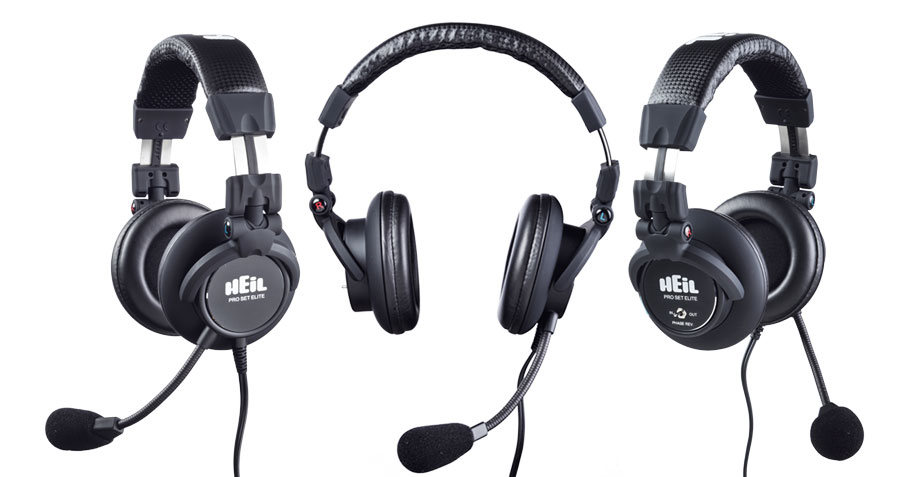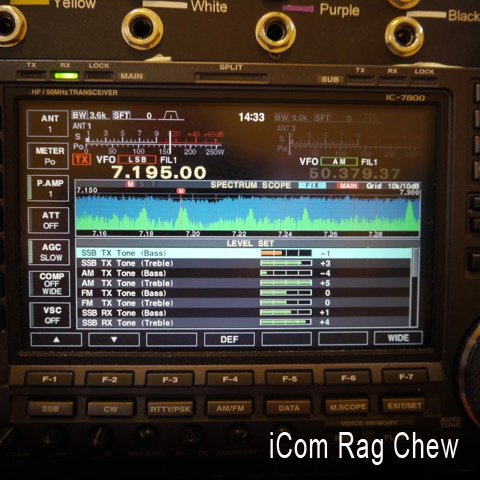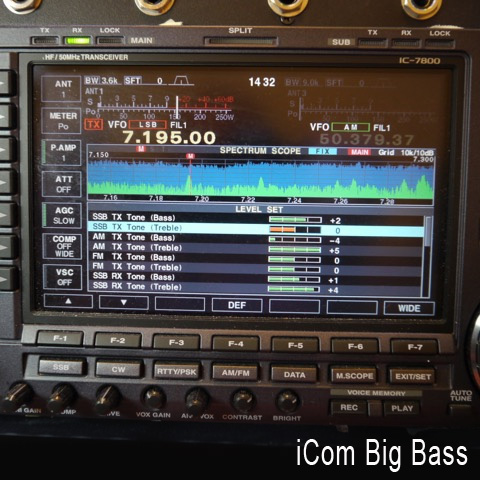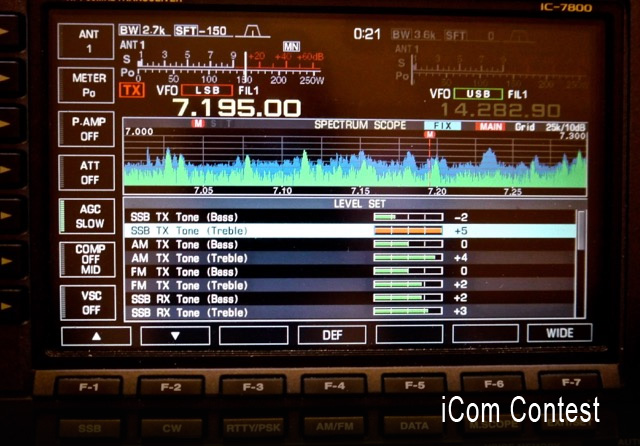
The 7610 is a full function transceiver with the addition of being able to be used as an SDR receiver.The Heil iCM is the perfect and best match to this iCOM model.
Settings
Here are the settings for the Heil iCM or any Heil headsets with the ‘iC’ element:Wide transmit bandwidth. (2.9 kHz) for casual contacts. Mid transmit bandwidth (2.4 kHz) for DX and CONTEST work. Mic gain at 30 to 40 Compression at 3 Bass EQ is set to -3 dB Treble EQ is set to +3 dB
Here are the settings for the Heil Sound dynamic microphones:Wide Transmit Bandwidth (2.9 kHz.)for casual contacts Mid Transmit Bandwidth (2.4 kHz.) for DX AND CONTEST work Mic gain at 80 Compression is set to 7 Bass EQ set to -3 dB Treble EQ set to +3 dB. These are initial settings to get you started with a great sounding signal. You may want to listen to yoursignal through the Monitor as you tweak each setting to your liking. Always speak into the microphone no more then 2 inches from your mouth.

DC De-coupling on Icom Rigs

If you do not have one of our microphones you need to do the above modification.
All ICOM transceivers utilize “phantom power” on their microphone inputs. Borrowing technology from the recording studios, DC power is applied via the mic line to energize the electret elements used in stock Icom microphones. At the same time, DC flows DOWN the mic cable while the mic audio is fed UP the same wire. Of course, the voice signal is AC, so DC flows one direction while AC flows the other direction – all on the same cable. This is pretty cool until you start having RFI problems, but we shall ignore that possibility for now.
The BIG problem with this is when you try using a REAL (dynamic) microphone. Connecting a dynamic into your mic input will provide a nice short of the +8V DC power straight to ground. SMOKE CITY!!!
To use any dynamic element on these phantom powered inputs (which should NEVER be applied to a mic input of a radio transmitter, IMHO), the input must be de-coupled so the mic audio AC signal can pass through to the mic preamp, while simultaneously blocking the DC voltage from reaching that mic element. Simply install a 1 µF non-polarized tantalum capacitor in series with mic lead. You may get by with a .68 F or a .47 uF, but anything less (.01 µF, .005 µF, etc.) will not pass any speech audio worth listening to). The cap MUST be a non-polarized type. This will keep the DC factor into the mic preamp circuitry.
Heil’s Amateur Radio specific microphones (non-3 pin XLR) have a 1 µF capacitor installed. All AD-1 boom set adapters have the decoupling capacitor installed in the 8 pin Foster connector. The coupling capacitor is NOT installed in our new high-impedance GM “VINTAGE” microphone, as this model should never be used with ICOM low impedance inputs.



